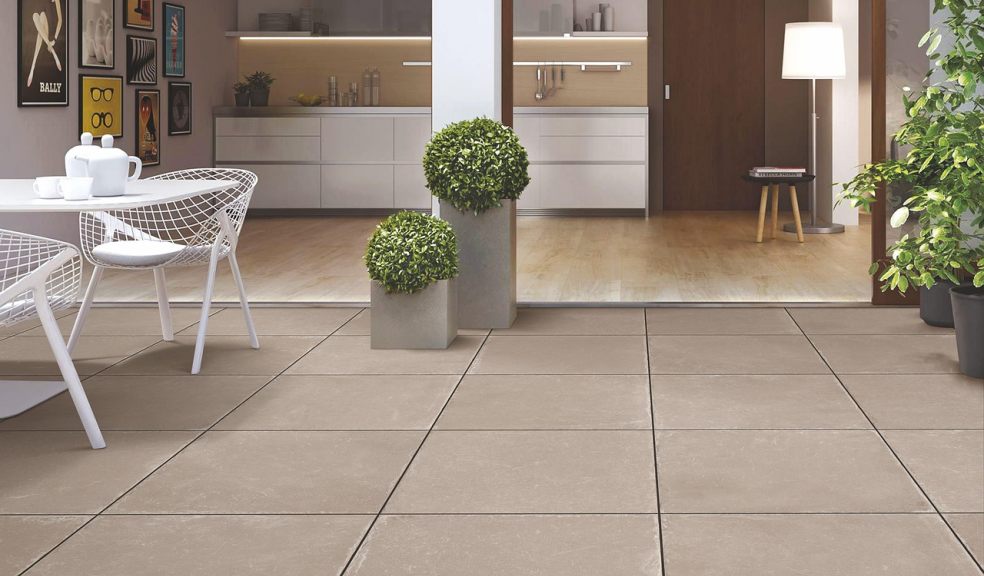
The Growing Popularity of Porcelain Paving in the UK and Ireland
In recent years, porcelain paving has seen a major surge in popularity across the UK and Ireland. Once considered a luxury material reserved for high-end homes and commercial projects, it has now become a sought-after option for homeowners, landscapers, and designers alike. Offering a combination of style, durability, and low maintenance, porcelain paving is redefining outdoor living spaces in remarkable ways.
Let’s take a closer look at why porcelain paving is trending and why more people are choosing it over traditional materials.
What is Porcelain Paving?
Porcelain paving is made from refined clay that is fired at extremely high temperatures, typically exceeding 1200°C. This process results in an incredibly hard, dense, and non-porous material that’s perfect for outdoor use. Often designed to mimic the appearance of natural stone, wood, or concrete, porcelain slabs provide a high-end finish with exceptional performance characteristics.
Unlike natural stone, which can vary in quality and porosity, porcelain tiles are manufactured to be uniform in texture and appearance, ensuring consistency across large areas.
Key Reasons Behind the Rise in Popularity
1. Outstanding Durability
One of the most significant factors contributing to the popularity of porcelain paving is its unbeatable durability. Porcelain is extremely resistant to scratching, chipping, and cracking, even under heavy foot traffic or extreme weather conditions.
In the UK and Ireland, where unpredictable weather is a given, materials that can withstand frost, rain, and temperature changes are highly valued. Porcelain’s low water absorption rate means that it won’t suffer from freeze-thaw damage, making it a long-term investment for patios, pathways, and garden areas.
2. Low Maintenance Appeal
Modern homeowners are increasingly seeking low-maintenance solutions for their outdoor spaces. Porcelain paving fits this requirement perfectly.
Unlike natural stone or wood, porcelain does not need to be sealed to protect it from staining, moisture, or algae growth. Simple cleaning with water and occasional mild detergent is usually all that’s required to keep it looking as good as new. This ease of care makes it especially attractive for busy families and property managers.
3. Wide Range of Styles and Finishes
Another major reason for the boom in porcelain paving is the sheer variety of designs available. Thanks to advances in digital printing technology, porcelain slabs can realistically replicate almost any material — from rustic timber to sleek marble or rugged slate.
This design versatility allows homeowners to achieve virtually any look they desire without the maintenance burdens that often accompany natural alternatives. Whether aiming for a minimalist contemporary garden or a charming cottage courtyard, there is a porcelain option to match every aesthetic.
4. Eco-Friendly Advantages
Sustainability is becoming a key factor in building and landscaping decisions. Porcelain paving is seen as a more environmentally friendly option compared to some traditional materials. Many manufacturers use recycled materials in the production process, and the long lifespan of porcelain means that replacements are less frequent, reducing environmental impact over time.
In addition, because porcelain is non-porous, it requires fewer chemical treatments like sealers and cleaners, making it a cleaner choice for both homeowners and the planet.
5. Slip Resistance for Safety
Safety is an important consideration for any outdoor surface, especially in climates prone to rain and ice. Porcelain paving is available in textured, anti-slip finishes that provide excellent grip underfoot.
This makes it an ideal choice for pool surrounds, patios, and pathways where slippery surfaces can be a hazard. Many UK and Irish homeowners are specifically opting for porcelain to make their gardens not only beautiful but safer for children, the elderly, and pets.
The Impact on Landscape Design Trends
Landscape design in the UK and Ireland is evolving to reflect the growing popularity of porcelain paving. Designers are increasingly incorporating porcelain slabs into outdoor living spaces, creating seamless transitions between indoor and outdoor areas.
The demand for open-plan living has extended to gardens, with features like outdoor kitchens, lounges, and dining areas becoming standard. Porcelain paving, with its clean lines and stylish finishes, provides the perfect foundation for these multifunctional spaces.
Furthermore, the ability to use matching indoor and outdoor porcelain tiles allows for a continuous flow that visually enlarges both spaces — a trend especially popular in urban homes with limited garden areas.
Key Considerations When Choosing Porcelain Paving
While porcelain paving offers numerous advantages, there are a few factors homeowners should keep in mind:
Professional Installation: Porcelain slabs are denser and heavier than traditional paving stones, which can make them trickier to install. Hiring an experienced porcelain paving installer ensures correct handling, cutting, and laying for optimal results.
Base Preparation: Proper ground preparation is essential. Porcelain slabs need a firm, well-draining sub-base and an appropriate adhesive to prevent movement and achieve long-term stability.
Choosing the Right Slip Rating: Not all porcelain tiles are created equal. Outdoor porcelain paving typically has a higher slip resistance rating (often R11 or higher) compared to indoor tiles, ensuring better safety in wet conditions.
Cost Factors: While porcelain paving was once more expensive than alternatives, the growing demand has led to a wider range of price points. Nevertheless, homeowners should weigh the upfront costs against the material’s long-term benefits, including minimal maintenance and longer lifespan.
Popular Porcelain Paving Styles in the UK and Ireland
Several styles are particularly popular among UK and Irish homeowners:
Stone-effect porcelain: Mimicking natural stones like limestone, granite, and slate, these tiles offer a rustic yet refined look without the associated upkeep.
Wood-effect porcelain: Perfect for creating cozy, natural-feel outdoor areas. Unlike real timber, porcelain won’t warp, rot, or require yearly staining.
Concrete-look porcelain: A favourite for modern, industrial-style gardens, providing a chic and urban edge.
Large-format slabs: Oversized tiles are becoming increasingly trendy, helping create a sleek, minimalist appearance with fewer grout lines.
The Takeaway
The rising popularity of porcelain paving in the UK and Ireland shows no signs of slowing down. As homeowners continue to seek stylish, durable, and low-maintenance options for their outdoor spaces, porcelain’s unique advantages make it a top contender.
With its resilience against harsh weather, wide range of aesthetic choices, low environmental impact, and practical safety features, porcelain paving is truly transforming gardens, patios, and pathways across Britain and Ireland.
For anyone looking to elevate their outdoor living area with a surface that is both beautiful and built to last, porcelain paving is undoubtedly a smart and future-proof investment.

















